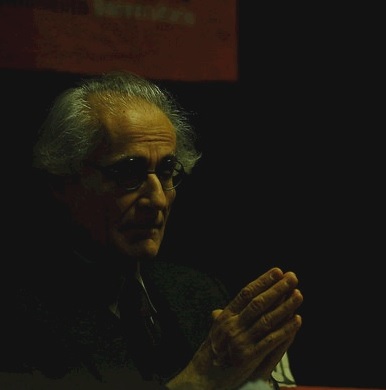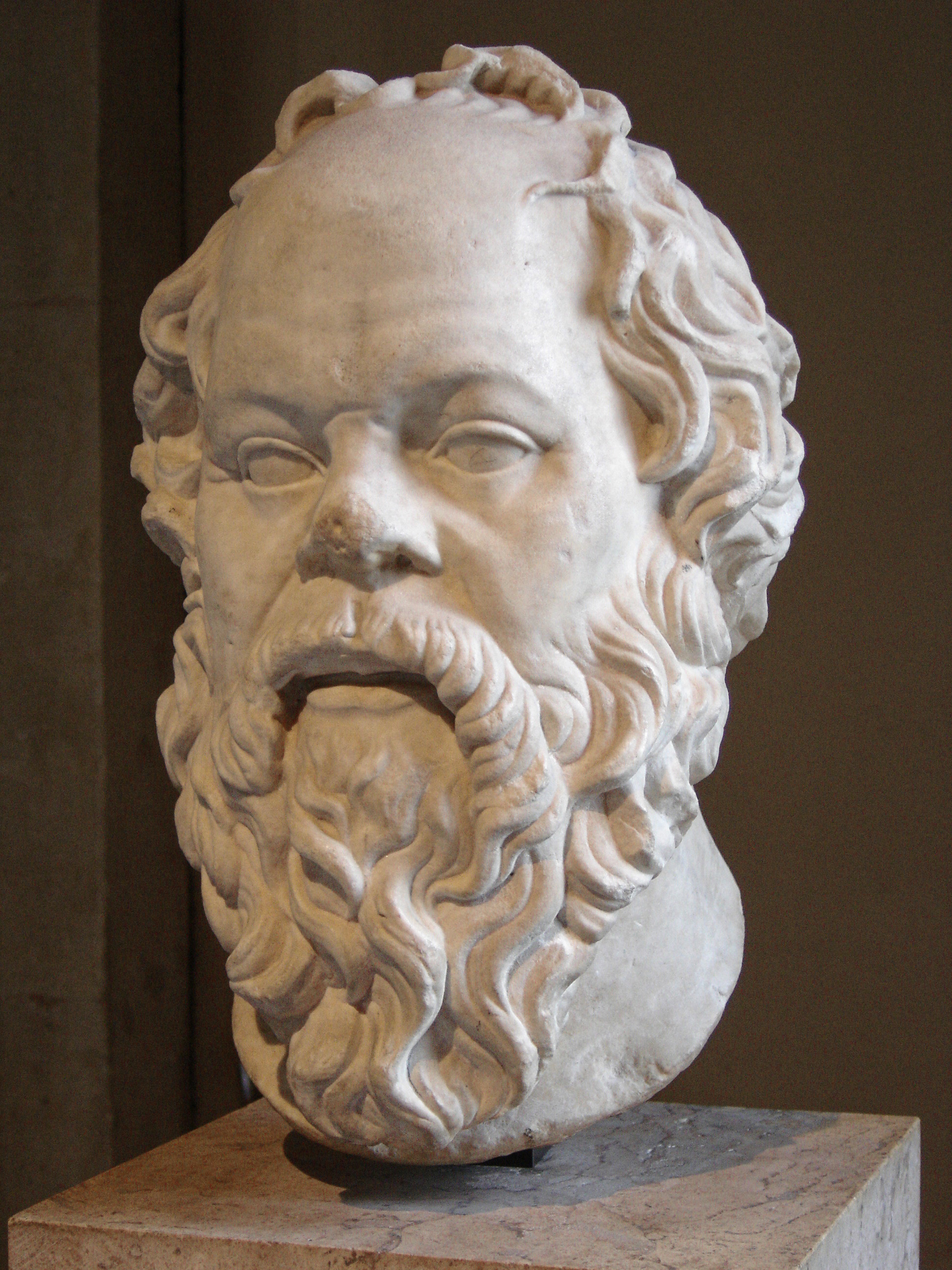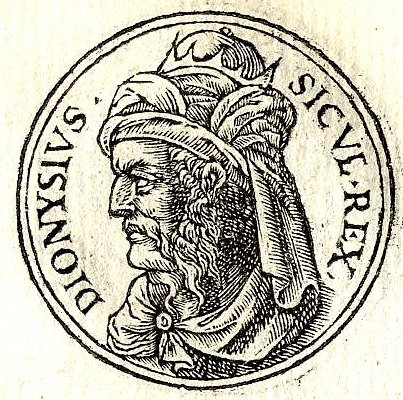|
Thirty Tyrants
The Thirty Tyrants ( grc, οἱ τριάκοντα τύραννοι, ''hoi triákonta týrannoi'') were a pro-Spartan oligarchy installed in Athens after its defeat in the Peloponnesian War in 404 BC. Upon Lysander's request, the Thirty were elected as a tyrannical government, not just as a legislative committee. Although they maintained power for only a brief eight months, their reign resulted in the killing of 5% of the Athenian population, the confiscation of citizens' property and the exile of other democratic supporters. They became known as the "Thirty Tyrants" because of their cruel and oppressive tactics. The two leading members were Critias and Theramenes. The rule of the Thirty With Spartan support, the Thirty established an interim government in Athens. The Thirty were concerned with the revision if not erasure of democratic laws inscribed on the wall next to the Stoa Basileios. Consequently, the Thirty reduced the rights of Athenian citizens in order to institute ... [...More Info...] [...Related Items...] OR: [Wikipedia] [Google] [Baidu] |
Laconophilia
Laconophilia is love or admiration of Sparta and of the Spartan culture or constitution. The term derives from Laconia, the part of the Peloponnesus where the Spartans lived. Admirers of the Spartans typically praise their valour and success in war, their " laconic" austerity and self-restraint, their aristocratic and virtuous ways, the stable order of their political life, and their constitution, with its tripartite mixed government. Ancient Laconophilia started to appear as early as the 5th century BC, and even contributed a new verb to grc, λακωνίζειν (literally: to act like a Laconian). Praise of the Spartan city-state persisted within classical literature ever afterward, and surfaced again during the Renaissance. Ancient Laconophilia Athens In ancient Athens, Laconism began as a current of thought and feeling after the Persian Wars. Some, like Cimon, son of Miltiades, believed that Athens should ally with Sparta against the Persian Empire. Cimon persuaded the At ... [...More Info...] [...Related Items...] OR: [Wikipedia] [Google] [Baidu] |
Poison Hemlock
''Conium maculatum'', colloquially known as hemlock, poison hemlock or wild hemlock, is a highly poisonous biennial herbaceous flowering plant in the carrot family Apiaceae, native to Europe and North Africa. A hardy plant capable of living in a variety of environments, hemlock is widely naturalized in locations outside its native range, such as parts of Australia, West Asia, and North and South America, to which it has been introduced. It is capable of spreading and thereby becoming an invasive weed. All parts of the plant are toxic, especially the seeds and roots, and especially when ingested. Under the right conditions the plant grows quite rapidly during the growing season and can reach heights of , with a long penetrating root. The plant has a distinctive odour usually considered unpleasant that carries with the wind. The hollow stems are usually spotted with a dark maroon colour before the plant dies and becomes dry and brown after completing its biennial lifecycle. The ... [...More Info...] [...Related Items...] OR: [Wikipedia] [Google] [Baidu] |
Luciano Canfora
Luciano Canfora (; born 5 June 1942) is an Italian classicist and historian. Born in Bari, Canfora obtained his first degree in Roman History in 1964 at Pisa University. He is currently Professor Emeritus of Classics at the University of Bari. His specialty is ancient libraries and his book ''The Vanished Library'' about Library of Alexandria has been translated into some 15 languages.*Cànfora, Luciano» in ''Dizionario Biografico degli Italiani'', Istituto dell'Enciclopedia Italiana, Roma (on-line) He has also published a history of democracy under the title ''La Democrazia: Storia di un'Ideologia'' (Bari, 2004). Since 1975, he has edited the periodical ''Quaderni di storia''. Canfora stood in the 1999 European Parliament election for the Party of Italian Communists The Party of Italian Communists ( it, Partito dei Comunisti Italiani, PdCI) was a communist party in Italy established in October 1998 by splinters from the Communist Refoundation Party (PRC). The split was led by ... [...More Info...] [...Related Items...] OR: [Wikipedia] [Google] [Baidu] |
Leon Of Salamis
Leon of Salamis (; grc-gre, Λέων) was a historical figure, mentioned in Plato's '' Apology'', Xenophon's '' Hellenica'' and Andocides' ''On the Mysteries'' (1.94). This Leon may also be the renowned Athenian general Leon of the Peloponnesian War. Plato's and Xenophon's Leon As part of the ''Hellenica'', the historian Xenophon describes the reign over Athens of the Thirty Tyrants, a ruthless oligarchy under the control of Sparta, Athens' Hellenic rival. Xenophon lists some of the atrocities committed by the Thirty, including "when Leon of Salamis, a man of high and well-deserved reputation, was put to death, though he had not committed the shadow of a crime" (''Hellenica'' Book II). In the ''Apology'', Plato's Socrates argues that he fears committing injustice more than he fears death. In support of that claim, he cites two incidents in which he, at great personal risk, disobeyed unjust commands of the Athenian government. One of those orders was for him to arrest Leon ... [...More Info...] [...Related Items...] OR: [Wikipedia] [Google] [Baidu] |
Apology (Plato)
The ''Apology of Socrates'' ( grc-gre, Ἀπολογία Σωκράτους, ''Apología Sokrátous''; la, Apologia Socratis), written by Plato, is a Socratic dialogue of the speech of legal self-defence which Socrates (469–399 BC) spoke at his trial for impiety and corruption in 399 BC. Specifically, the ''Apology of Socrates'' is a defence against the charges of "corrupting the youth" and "not believing in the gods in whom the city believes, but in other '' daimonia'' that are novel" to Athens (24b). Among the primary sources about the trial and death of the philosopher Socrates, the ''Apology of Socrates'' is the dialogue that depicts the trial, and is one of four Socratic dialogues, along with '' Euthyphro'', '' Phaedo'', and '' Crito'', through which Plato details the final days of the philosopher Socrates. The text of apology The ''Apology of Socrates'', by the philosopher Plato (429–347 BC), was one of many explanatory ''apologia'' about Socrates's legal defense ... [...More Info...] [...Related Items...] OR: [Wikipedia] [Google] [Baidu] |
Polemarchus
Polemarchus (; el, Πολέμαρχος; 5th century – 404 BC) was an ancient Athenian philosopher from Piraeus. Life The son of Cephalus of Syracuse, Polemarchus had two brothers, the famous orator Lysias and Euthydemus, and a sister who married Brachyllus. Polemarchus and Lysias traveled to Thurii when the latter was 15 years old. During the Athenian political upheaval in the late 5th century, Polemarchus was singled out by the Thirty Tyrants for being a wealthy metic. Unlike his brother, he did not manage to escape and was executed by being forced to drink hemlock. Melobius, one of the Thirty, snatched golden earrings from Polemarchus' wife. After Polemarchus' death, the Thirty forbade his family from holding a funeral in any of their houses. Plato's '' Republic'' is set at Polemarchus' house in the Piraeus, which was located next to their shield manufacturing store that employed 120 skilled slaves. Polemarchus himself speaks briefly in Book 1 of the ''Republic''.Plato, ... [...More Info...] [...Related Items...] OR: [Wikipedia] [Google] [Baidu] |
Lysias
Lysias (; el, Λυσίας; c. 445 – c. 380 BC) was a logographer (speech writer) in Ancient Greece. He was one of the ten Attic orators included in the "Alexandrian Canon" compiled by Aristophanes of Byzantium and Aristarchus of Samothrace in the third century BC. Life According to Dionysius of Halicarnassus and the author of the life ascribed to Plutarch, Lysias was born in 459 BC, which would accord with a tradition that Lysias reached, or passed, the age of eighty. This date was evidently obtained by reckoning back from the foundation of Thurii (444 BC), since there was a tradition that Lysias had gone there at the age of fifteen. Modern critics, in general, place his birth later, c. 445 BC, and place the trip to Thurii around 430 BC. Cephalus, his father, was a native of Syracuse, and on the invitation of Pericles had settled at Athens. The opening scene of Plato's ''Republic'' is set at the house of his eldest son, Polemarchus, in Piraeus. The tone of the picture ... [...More Info...] [...Related Items...] OR: [Wikipedia] [Google] [Baidu] |
Republic (Plato)
The ''Republic'' ( grc-gre, Πολῑτείᾱ, Politeia; ) is a Socratic dialogue, authored by Plato around 375 BCE, concerning justice (), the order and character of the just city-state, and the just man. It is Plato's best-known work, and one of the world's most influential works of philosophy and political theory, both intellectually and historically. In the dialogue, Socrates discusses the meaning of justice and whether the just man is happier than the unjust man with various Athenians and foreigners.In ancient times, the book was alternately titled ''On Justice'' (not to be confused with the spurious dialogue of the same name). They consider the natures of existing regimes and then propose a series of different, hypothetical cities in comparison, culminating in Kallipolis (Καλλίπολις), a utopian city-state ruled by a philosopher-king. They also discuss ageing, love, theory of forms, the immortality of the soul, and the role of the philosopher and of poe ... [...More Info...] [...Related Items...] OR: [Wikipedia] [Google] [Baidu] |
Seventh Letter
The ''Seventh Letter of Plato'' is an epistle that tradition has ascribed to Plato. It is by far the longest of the epistles of Plato and gives an autobiographical account of his activities in Sicily as part of the intrigues between Dion and Dionysius of Syracuse for the tyranny of Syracuse. It also contains an extended philosophical interlude concerning the possibility of writing true philosophical works and the theory of forms.R. G. Bury, Prefatory note to "Epistle VII" in ''Plato IX'', Loeb Classical Library (Cambridge, MA: Harvard University Press, 1929): 463–75. Assuming that the letter is authentic, it was written after Dion was assassinated by Calippus in 353 BC and before the latter was in turn overthrown a year later. Authenticity Of all the letters attributed to Plato, the ''Seventh Letter'' is widely considered the only one that might be authentic. R. Ledger defends its authenticity on the basis of computer analysis.R. Ledger, ''Re-counting Plato: A Computer A ... [...More Info...] [...Related Items...] OR: [Wikipedia] [Google] [Baidu] |
Plato
Plato ( ; grc-gre, Πλάτων ; 428/427 or 424/423 – 348/347 BC) was a Greek philosopher born in Athens during the Classical period in Ancient Greece. He founded the Platonist school of thought and the Academy, the first institution of higher learning on the European continent. Along with his teacher, Socrates, and his student, Aristotle, Plato is a central figure in the history of Ancient Greek philosophy and the Western and Middle Eastern philosophies descended from it. He has also shaped religion and spirituality. The so-called neoplatonism of his interpreter Plotinus greatly influenced both Christianity (through Church Fathers such as Augustine) and Islamic philosophy (through e.g. Al-Farabi). In modern times, Friedrich Nietzsche diagnosed Western culture as growing in the shadow of Plato (famously calling Christianity "Platonism for the masses"), while Alfred North Whitehead famously said: "the safest general characterization of the European philosophical tradit ... [...More Info...] [...Related Items...] OR: [Wikipedia] [Google] [Baidu] |
Piraeus
Piraeus ( ; el, Πειραιάς ; grc, Πειραιεύς ) is a port city within the Athens urban area ("Greater Athens"), in the Attica region of Greece. It is located southwest of Athens' city centre, along the east coast of the Saronic Gulf. The municipality of Piraeus and four other suburban municipalities form the regional unit of Piraeus, sometimes called the Greater Piraeus area, with a total population of 448,997. At the 2011 census, Piraeus had a population of 163,688 people, making it the fifth largest municipality in Greece2011 POPULATION AND HOUSING CENSUS, HELLENIC STATISTICAL AUTHORITY, http://www.statistics.gr/documents/20181/1215267/A1602_SAM01_DT_DC_00_2011_03_F_EN.pdf/cb10bb9f-6413-4129-b847-f1def334e05e and the second largest (after the municipality of Athens) within the Athens urban area. Piraeus has a long recorded history, dating back to ancient Greece. The city was founded in the early 5th century BC, when plans to make it the new port of Athen ... [...More Info...] [...Related Items...] OR: [Wikipedia] [Google] [Baidu] |
Phyle Campaign
The Phyle Campaign was the civil war that resulted from the Spartan imposition of a narrow oligarchy on Athens (see Thirty Tyrants) and resulted in the restoration of Athenian democracy. Prelude The Thirty were short of funds and this led them to persecute wealthy Athenians of whatever political views. Many fled to Boeotia and Corinth who offered asylum in defiance of Sparta. The campaign The Thirty Tyrants had left Athens' border forts ungarrisoned, both out of deference to Sparta and because of their cash shortage. This allowed a group of Athenian exiles to seize the fort of Phyle in 404/403 BCE. The leader of the exiles, initially only some 70 strong, was Thrasybulus who had a reputation as a moderate democrat, and thus was ideal to unite all democratic opponents of the Thirty. A force of Athenian cavalry and Spartans was sent against Phyle, but was defeated in two surprise attacks by Thrasybulus at the Battle of Phyle. Thrasybulus then marched on Piraeus and defeated the ... [...More Info...] [...Related Items...] OR: [Wikipedia] [Google] [Baidu] |





